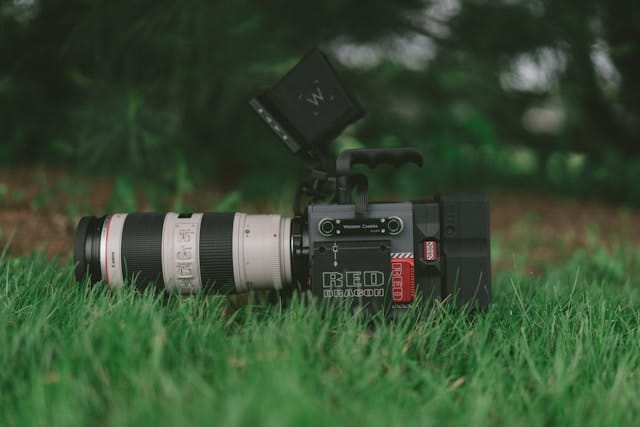Light field photography is transforming the world of image capturing by allowing photographers to capture images with much more depth, flexibility, and detail than traditional photography. Light field photography explained revolves around the concept of recording not only the intensity and color of light rays but also their direction, enabling users to refocus images after capturing them. Imagine taking a photo and then being able to choose later which part of the image should be in focus—this is precisely what this type of photography enables.
As this innovative technology continues to evolve, it is becoming a key component in creative fields, virtual reality (VR), augmented reality (AR), and 3D modeling. By offering control over depth and perspective after the fact, light field photography offers exciting possibilities for both professionals and hobbyists alike. This guide provides a deep dive into how this type of photography works, its advantages over traditional photography, and its future potential in industries ranging from entertainment to healthcare.
Whether you’re looking to enhance your photography skills or explore new opportunities in 3D visualization and VR, understanding this will unlock a new world of possibilities. This technology not only redefines how images are captured but also how we interact with them, making it a must-know for anyone interested in the future of visual media.
Understanding Light Field Photography
At the heart of this type of photography lies the technology’s ability to capture more information than traditional cameras. Unlike conventional photography, which records a single image with a fixed focus and perspective, this type of photography captures all the light data within a scene, including its direction and intensity. This provides a multidimensional dataset that allows users to manipulate focus, perspective, and even depth of field after the image is captured.
How It Works
To grasp the fundamentals of this, it’s important to understand how the technology behind it functions. Light field cameras, also known as plenoptic cameras, contain a micro-lens array placed between the main lens and the sensor. This array splits the light entering the camera into multiple rays, which are then captured from different angles.
Instead of capturing a flat 2D image, as a traditional camera would, a light field camera gathers information about where each ray of light is coming from, its intensity, and its color. This allows for much greater manipulation of the image in post-production, including the ability to adjust the focus, shift perspectives, and generate 3D images.
Components of a Light Field Camera
- Main Lens: The main lens works much like that of a traditional camera, focusing light onto the sensor.
- Micro-Lens Array: This is the defining feature of light field cameras. It breaks the incoming light into multiple rays, each hitting the sensor at a slightly different angle, capturing a wider array of data.
- Image Sensor: The sensor records all the light data, including the direction, intensity, and color, creating a 4D light field dataset.
Advantages of Light Field Photography
There are several reasons why this type of photography is gaining traction in various industries. The key advantages include its flexibility in refocusing images, depth capture, and enhanced post-processing capabilities.
1. Refocusing Post-Capture
One of the most significant advantages of this is the ability to refocus images after they are taken. This is particularly useful in situations where the initial focus may not have been perfect, or where a photographer wants to explore different creative options in post-production. By adjusting the focus after capturing an image, users can highlight different subjects within the same photo without the need for multiple shots.
2. Depth Capture
Light field photography also records depth information, allowing for the creation of 3D images. This is achieved by capturing light rays from different angles, providing depth cues that are not available in traditional 2D photographs. For applications in VR and AR, this is a crucial feature, as it enables immersive, interactive experiences where users can explore a scene from different viewpoints.
3. Perspective Shifting
In addition to refocusing, light field photography allows for perspective shifting. This means users can adjust the viewing angle of the image after capture, giving the impression of moving around within the scene. This is particularly useful for creating 3D models or for use in VR environments where interactive, dynamic images are required.
Applications of Light Field Photography
The versatility of this type of photography extends beyond the realm of traditional photography. Its applications span across various fields, each benefiting from the ability to manipulate focus, depth, and perspective after capturing an image.
1. Virtual Reality (VR) and Augmented Reality (AR)
One of the most promising applications of this type of photography is in VR and AR environments. Because light field cameras capture depth and perspective data, they are ideal for creating immersive 3D environments that users can explore from different angles. In VR, light field photography enables users to experience scenes as if they were physically present, while in AR, it allows for the realistic overlay of digital content onto the real world.
2. Creative Arts and Photography
For photographers and artists, this provides new creative opportunities. The ability to refocus and change perspectives opens up endless possibilities for storytelling and artistic expression. Photographers no longer need to worry about getting the perfect focus in the moment, as they can make adjustments afterward. This flexibility allows for more spontaneous and dynamic shooting styles.
3. Scientific and Medical Imaging
Light field photography is also finding applications in the scientific and medical fields. Its ability to capture depth information makes it a valuable tool for creating detailed 3D models of objects or biological structures. In medical imaging, light field technology could be used to capture more comprehensive views of internal structures, improving the accuracy of diagnoses and surgical planning.
4. Film and Entertainment
The film industry is another area where this type of photography is making waves. In cinematography, light field cameras can be used to capture scenes with much more depth and detail than traditional cameras. This is especially useful for special effects and 3D movies, where depth perception is critical. Additionally, light field technology allows for more dynamic and interactive film experiences, where viewers can explore scenes from different angles.
Challenges in Light Field Photography
While this type of photography offers many advantages, it also comes with certain challenges. The technology is still relatively new, and there are some hurdles to widespread adoption.
1. File Size and Processing Power
One of the main drawbacks of this is the size of the files it produces. Because light field cameras capture much more data than traditional cameras, the resulting files are significantly larger, requiring more storage space and more powerful computers for post-processing.
2. Cost of Equipment
Light field cameras are also more expensive than traditional cameras, which may limit their accessibility to professional photographers and studios. However, as the technology becomes more mainstream, it is likely that prices will come down, making it more affordable for a broader audience.
3. Learning Curve
Finally, light field photography comes with a steeper learning curve than traditional photography. The post-processing required to make full use of the technology can be complex, requiring specialized software and skills. However, for those willing to invest the time to learn, the creative possibilities are virtually endless.
The Future of Light Field Photography
As light field technology continues to evolve, it is expected to become a standard tool in industries ranging from photography to entertainment to healthcare. With advancements in camera hardware and computational photography, light field cameras will likely become more affordable and user-friendly, opening up new possibilities for both professional and amateur photographers.
In the future, we may see light field photography integrated into smartphones and other consumer devices, making it accessible to a broader audience. This would allow everyday users to take advantage of the refocusing and perspective-shifting capabilities, revolutionizing how we capture and interact with images.
Additionally, as VR and AR technologies continue to develop, this will play an increasingly important role in creating immersive, interactive experiences. Whether you’re a professional photographer, a VR developer, or just someone interested in the future of visual media, this type of photography offers a glimpse into the future of image capturing.
Conclusion
Light field photography represents a significant leap forward in the way we capture and interact with images. By recording not just the intensity and color of light but also its direction and depth, this technology allows for unprecedented flexibility in focus, perspective, and depth control. Whether used for creative photography, virtual reality, or scientific imaging, the applications of light field photography are vast and diverse.
As the technology continues to improve and become more accessible, it will undoubtedly reshape industries from entertainment to healthcare. Understanding this will provide you with the knowledge and tools to take advantage of this groundbreaking technology, opening up new creative and technical possibilities.
In the end, light field photography is more than just a new way to take pictures—it’s a new way to experience the world around us. By capturing every angle and every ray of light, it offers a deeper, more immersive way to see and understand our surroundings.
External Links






